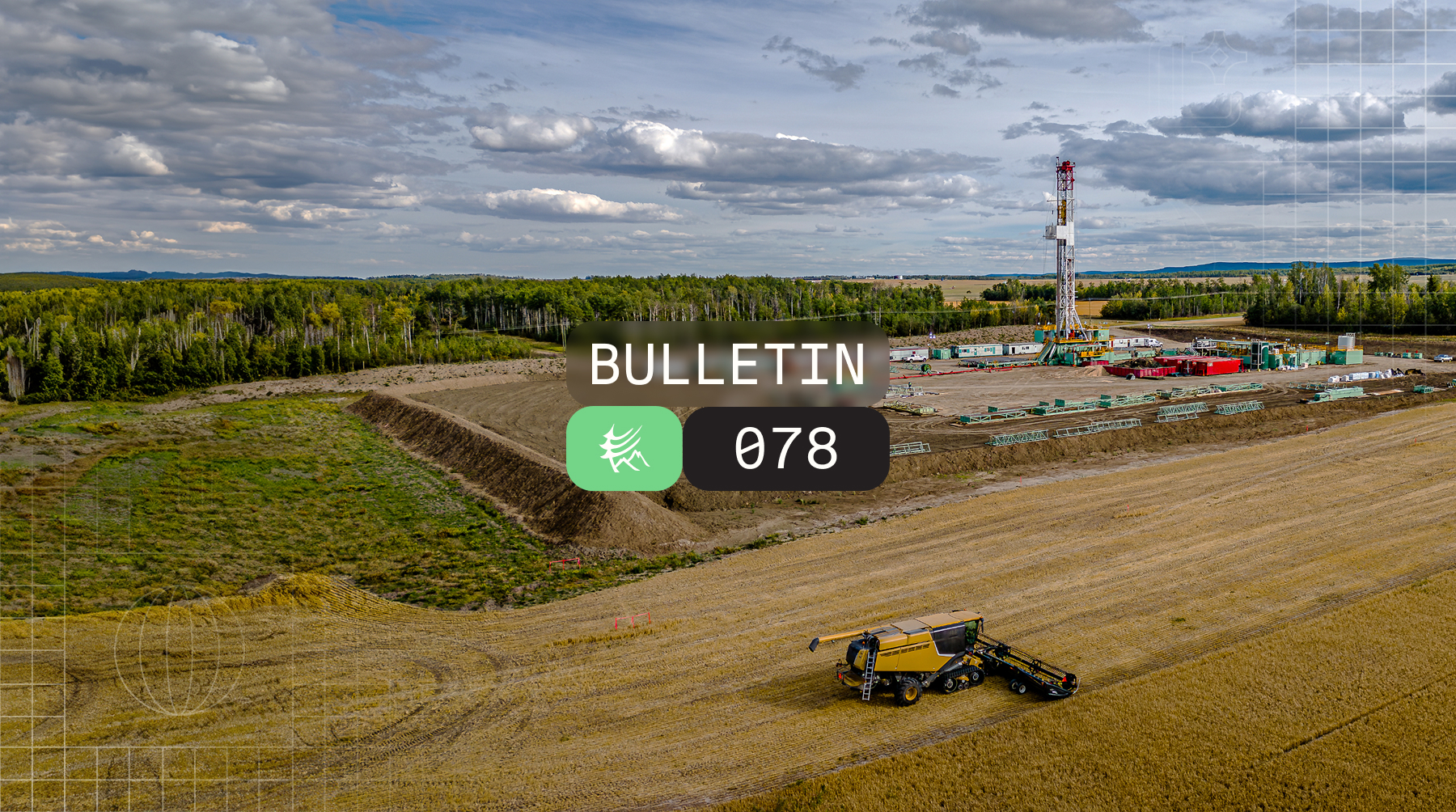Please send comments and questions to Thomas Fox: thomas@highwoodemissions.com
Emissions Reconciliation 101
Estimating emissions quantities over time is complex – different approaches usually lead to different answers. Reconciling discrepancies among estimates is increasingly common as it can help improve understanding of the overall system. However, reconciliation is a new concept, and despite growing adoption, the term is used in different ways by different people, initiatives, and organizations. The purpose of this article is to compare and contrast the different approaches to reconciliation and the different ways that people think about it. The simplest definition of reconciliation is to compare two different estimates and propose reasons for why they differ. A range of more complex definitions and methodologies are also explored in this document. In particular, we focus on OGMP 2.0, Veritas, and MiQ. In addition, we take a quick look at reconciliation in the academic literature.
A Beginner’s Guide to the Many Flavours of Reconciliation
Emissions reconciliation can happen in different ways. Commonly, it occurs between ‘bottom up’ and ‘top down’ estimates. Top-down estimates may combine numerous individual sources but may not be able to resolve them. Bottom-up estimates build up from the individual sources in a system and add them together. Here are some useful things to remember when thinking about emissions reconciliation:
Both bottom-up and top-down estimates can be made using a variety of approaches, including (1) direct measurement of methane, (2) engineering equations that leverage operator-specific proxies (e.g., calculating volume of gas in a pipeline blowdown), and (3) general inventories (i.e., industry averages or distributions combined with activity factors). When talking about reconciliation, it is important to specify the estimation approach.
Reconciliation can be performed at different spatial scales. These scales should be consistent. For example, when reconciliation is performed at the site scale, it means that a site-level measurement is reconciled with all the individual sources at a site. However, reconciliation can also occur between a collection of site-level measurements and an entire region. When talking about reconciliation, it is important to specify what spatial scales are being reconciled.
Reconciliation can be performed on individual cases, for averages, or even for entire distributions of estimates. Let’s continue with the site-level example. We can perform a top-down measurement of an individual site and reconcile it with a bottom-up inventory. We can also perform multiple top-down measurements of a collection of sites and compare the average or sum to that of the bottom-up inventory. To take it a step further, instead of comparing only the averages or totals, we could compare a distribution of site-level emission rates to a distribution of inventory estimates.
A common mistake is to attempt reconciliation across incompatible temporal scales. For example, an aerial site-level snapshot measurement provides only a single perspective of what a site is emitting, even though most sites experience significant temporal variability in emissions. Traditional bottom-up inventories often use emissions factors that represent temporal averages. For example, a gas-driven pneumatic valve may actuate briefly once every minute. An aerial technology (if sufficiently sensitive) will either detect a plume or detect nothing, while the bottom-up inventory will be a single average somewhere in the middle. In the same way that multiple sites can be sampled to generate a more representative estimate or distribution of estimates, the same site may be measured repeatedly to better characterize the temporal variability at that site.
Reconciliation can be made among different methods, but for the same spatial and temporal scales. For example, an aircraft and a drone may acquire site-level measurements of the same site at the same time. These estimates may not be the same due to (1) emission rate estimation uncertainty and (2) differences in what is being measured (perfect ‘whole site’ measurements are elusive and difficult to verify as some sources may be inadvertently omitted, like certain equipment groups or dilute sources like methane slip).
Reconciliation is complicated by uncertainty in measurements. For example, measurement methods will have a probability of detecting certain sources under certain conditions. A source may be accounted for by an inventory but may be too small to be detected by a site-level measurement solution, which could assume zero emissions. For sources that are detected, emission rate estimation for individual measurements is impacted by both random error and systematic bias, meaning that a discrepancy exists between the true emission rate and the estimated/reported rate.
Discrepancies can go in both directions. Most research performed to date finds that top-down estimates exceed bottom-up estimates. However, it is possible that top-down estimates are lower than bottom-up estimates. When this happens, the discrepancy still indicates a lack of understanding, so reconciliation should occur!
Reconciliation in the Academic Literature
The concept of emissions reconciliation arose because discrepancies among methane measurements and inventories are common in the peer-reviewed literature. A detailed review of this literature is beyond the scope of this document. However, those interested may investigate further by exploring the references listed at the end of this document.1–4
Reconciliation in OGMP 2.0
The Oil & Gas Methane Partnership 2.0 (OGMP 2.0) is a multi-stakeholder initiative launched by UNEP and the Climate and Clean Air Coalition. It is a measurement-based reporting framework for the oil and gas industry that seeks to improve the accuracy and transparency of methane emissions reporting.
In OGMP 2.0, companies are encouraged to perform reconciliation between source-level inventories and site-level measurements. The purpose of reconciliation in OGMP 2.0 is to complement – and potentially improve – source-level inventories. In OGMP 2.0, reconciliation is viewed as an ongoing process that requires engagement with data, inter-annual investigation, and gradual progress.
In terms of how to perform reconciliation, OGMP 2.0 is not prescriptive but does provide some guidance on what should be compared. First, the source-level inventory is built from a complete account of all possible sources using company-specific activity factors and generic emissions factors (together, these comprise OGMP 2.0 Level 3). The Level 3 inventory is then upgraded to a Level 4 inventory by replacing industry average emission factors with company-specific emission factors – focusing first on the most material sources and then narrowing in on those expected to be less material (using Level 3 inventory to guide expectation). Source level emissions estimates in the L4 inventory should incorporate variability of emissions over the reporting period for the sources, relationship of source measurements to operating parameters (if appropriate), and an estimate of the uncertainty for both the measurement methods and reported emissions.
Once the Level 4 inventory is established, site-level measurements and reconciliation are conducted. Reconciliation in OGMP 2.0 means comparing the sum of Level 4 emissions for a population or sample of sites to the aggregate site-level measurements for those same sites. The purpose of reconciliation is to improve source-level (Level 4) inventories and reporting. More specifically, this comparison can mean one of two things. First, operators may simply endeavour to explain observed discrepancies. Second, the operator is encouraged to update Level 4 source-level inventory assumptions. When discrepancies occur, operators should update their sampling strategy in the following year – and potentially also their Level 4 methodology. The end goal is for site-level measurements to corroborate the Level 4 inventory because both are sufficiently understood.
OGMP 2.0 provides flexibility to perform reconciliation using two general approaches:
- For an individual site or small sample of sites with a highly temporally resolved source-level inventory. Here, site-level measurements test the accuracy of the source-level inventory.
- On a population basis, when temporally resolved source-level inventories are not available. Here, statistical approaches may be used to compare distributions.
Reconciliation in Veritas
Traditionally, methane intensity was only calculated using methodologies like NGSI that rely exclusively on emission factors. The GTI Energy Veritas Initiative provides a set of protocols to guide development of a measurement-informed inventory. Veritas is primarily a methodology for acquiring site-level measurements and conducting reconciliation. It provides specific guidance to 6 segments of the supply chain, methane data collection guidelines, and guidance for calculating methane intensity.
The immediate goal of Veritas is to efficiently reach the most accurate emission estimate across a collection of sites (i.e., to get as close to the ‘truth’ as possible). Veritas therefore differs from OGMP 2.0, where the primary goal is understanding the source-level inventory to achieve emission reductions. Unlike OGMP 2.0, Veritas therefore does not require reduction targets, emissions reporting, or operator-specific source-level emission factors. As a methodology, Veritas is more prescriptive than OGMP 2.0. Veritas is intended to be used by those who require methane intensity estimates for the oil and gas industry, which may include regulators, companies participating in gas certification initiatives, or even for internal purposes. In particular, the Veritas methodology could be used to guide site-level measurements and reconciliation in OGMP 2.0 Level 5. However, to constitute a Gold Standard, Veritas would have to be combined with additional specific requirements of OGMP 2.0 (e.g., targets, reporting, source-level measurements).
Reconciliation in Veritas differs by supply chain segment. In general, there are three reconciliation pathways. In the first, enough measurements are acquired with a highly sensitive technology that reconciliation is not needed because emissions data is complete – measurements alone are used to calculate intensity. In the second pathway, total emissions are the sum of the entire inventory and all measurements. Pathway 2 is only used for low-sensitivity solutions that only detect sources larger than expected to be found in the inventory.
The third pathway is used for intermediate sensitivity measurement methods and presents the most complex (yet most common) reconciliation process. In Pathway 3, measurements are performed at the site level and are used to guide follow-up inspections at the source level. Follow-up inspection attempt to explain the source-level cause of what was identified at the site level. For each measured source, the analyst must determine with it was unexpected or if it is already accounted for in the inventory. If the source is already in the bottom-up inventory, then the measurement is removed. If the source is not in the inventory, then the measured emissions are added. Only Pathway 3 would satisfy OGMP 2.0 requirements, assuming reconciliation was performed with an OGMP 2.0 Level 4 inventory.
Veritas also includes a test to ensure that at least 50% of the inventory is derived from measurement data to be considered ‘measurement-based’. Follow reconciliation, if the 50% criterion is not met, the operator should use a more sensitive technology the following year.
Reconciliation in MiQ
MiQ is a certification system for natural gas with low methane emissions. Companies that achieve MiQ requirements receive graded certificates for units of produced natural gas. Normally, certificates cannot be retired until a final audit occurs. However, MiQ introduced a new incentive in July 2022 that enables immediate retirement of certificates for operators that meet optional requirements, including reconciliation. The other benefit to following the new guidelines is that only one audit per year is required (instead of two).
MiQ sets forth Minimum Reconciliation Requirements they expect operators to meet. Compared to OGMP 2.0 and Veritas, MiQ’s reconciliation requirements are non-prescriptive and provide flexibility to operators. Both source-level and facility-scale (i.e., site-level) inspections are required. In both cases, a root-cause analysis is required in which emissions are classified as either purposeful or unintentional. Operators must estimate the emission rate and duration of unintentional sources and add them to the inventory used to determine the operator’s methane intensity. In this way, MiQ reconciliation is similar to Pathway 2 in Veritas, except that all unintentional emissions must be added to the emissions inventory. The purpose of reconciliation in MiQ is to achieve a more accurate methane intensity estimate, which aligns with the purpose of Veritas.
References
1. Alvarez, R. A. et al. Assessment of methane emissions from the US oil and gas supply chain. Science 361, 186–188 (2018).
2. Chen, Y. et al. Comprehensive aerial survey quantifies high methane emissions from the New Mexico Permian Basin. (2021).
3. Rutherford, J. S. et al. Closing the methane gap in US oil and natural gas production emissions inventories. Nature communications 12, 1–12 (2021).
4. Wang, J. L. et al. Multi-scale Methane Measurements at Oil and Gas Facilities Reveal Necessary Framework for Improved Emissions Accounting. (2022).






